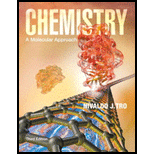
Chemistry: A Molecular Approach
3rd Edition
ISBN: 9780321809247
Author: Nivaldo J. Tro
Publisher: Prentice Hall
expand_more
expand_more
format_list_bulleted
Concept explainers
Question
Chapter 1, Problem 2SAQ
Interpretation Introduction
Interpretation: The sample (given in the textbook question) is to be classified in accordance to their composition.
Expert Solution & Answer
Learn your wayIncludes step-by-step video

schedule05:01
Chapter 1 Solutions
Chemistry: A Molecular Approach
Ch. 1 - A chemist mixes sodium with water and witnesses a...Ch. 1 - Q2. This image represents a particulate view of a...Ch. 1 - Which change is a physical change? a) Wood burning...Ch. 1 - Which property of rubbing alcohol is a chemical...Ch. 1 - Convert 85F to K. a) 181.1 K b) 358 K c) 29.4 K d)...Ch. 1 - Express the quantity 33.2 10?4 m in mm. a) 33.2...Ch. 1 - Q7. What is the mass of a 1.75 L sample of a...Ch. 1 - Perform the calculation to the correct number of...Ch. 1 - Q9. Perform the calculation to the correct number...Ch. 1 - Q10. Convert 1285 cm2 to m2.
a) 1.285 × 107...
Ch. 1 - Q11. The first diagram depicts a compound in its...Ch. 1 - Q12. Three samples, each of a different substance,...Ch. 1 - Q13. A solid metal sphere has a radius of 3.53 cm...Ch. 1 - Q14.
A German automobile gets a gas mileage of 22...Ch. 1 - Q15. A wooden block has a volume of 18.5 in3....Ch. 1 - 1. Explain this statement in your own words and...Ch. 1 - Prob. 2ECh. 1 - 3. Describe the scientific approach to knowledge....Ch. 1 - 4. Explain the differences between a hypothesis, a...Ch. 1 - 5. What observations did Antoine Lavoisier make?...Ch. 1 - 6. What theory did John Dalton formulate?
Ch. 1 - 7. What is wrong with the expression “That is just...Ch. 1 - 8. What are two different ways to classify...Ch. 1 - 9. How do solids, liquids, and gases differ?
Ch. 1 - 10. What is the difference between a crystalline...Ch. 1 - 11. Explain the difference between a pure...Ch. 1 - 12. Explain the difference between an element and...Ch. 1 - 13. Explain the difference between a homogeneous...Ch. 1 - 14. What kind of mixtures can be separated by...Ch. 1 - 15. Explain how distillation is used to separate...Ch. 1 - 16. What is the difference between a physical...Ch. 1 - 17. What is the difference between a physical...Ch. 1 - 18. Explain the significance of the law of...Ch. 1 - Prob. 19ECh. 1 - 20. What are the standard SI base units of length,...Ch. 1 - 21. What are the three common temperature scales?...Ch. 1 - 22. What are prefix multipliers? List some...Ch. 1 - 23. What is a derived unit? List an example.
Ch. 1 - 24. Explain the difference between density and...Ch. 1 - 25. Explain the difference between intensive and...Ch. 1 - 26. What is the meaning of the number of digits...Ch. 1 - 27. When multiplying or dividing measured...Ch. 1 - 28. When adding and subtracting measured...Ch. 1 - 29. What are the rules for rounding off the...Ch. 1 - Prob. 30ECh. 1 - Prob. 31ECh. 1 - 32. What is dimensional analysis?
Ch. 1 - 33. Classify each statement as an observation, a...Ch. 1 - 34. Classify each statement as an observation, a...Ch. 1 - 35. A chemist decomposes several samples of carbon...Ch. 1 - 36. When astronomers observe distant galaxies,...Ch. 1 - 37. Classify each substance as a pure substance or...Ch. 1 - 38. Classify each substance as a pure substance or...Ch. 1 - 39. Complete the table.
Substance Pure or...Ch. 1 - 40. Complete the table.
Substance Pure or...Ch. 1 - 41. Determine whether each molecular diagram...Ch. 1 - 42. Determine whether each molecular diagram...Ch. 1 - 43. Classify each of the listed properties of...Ch. 1 - Prob. 44ECh. 1 - Prob. 45ECh. 1 - 46. Classify each property as physical or...Ch. 1 - 47. Classify each change as physical or...Ch. 1 - Prob. 48ECh. 1 - 49. Based on the molecular diagram, classify each...Ch. 1 - 50. Based on the molecular diagram, classify each...Ch. 1 - 51. Convert each temperature.
a. F to ...Ch. 1 - 52. Convert each temperature.
a. F to ...Ch. 1 - 53. The coldest temperature ever measured in the...Ch. 1 - Prob. 54ECh. 1 - Use the prefix multipliers to express each...Ch. 1 - 56. Use the prefix multiplier to express each...Ch. 1 - 57. Use scientific notation to express each...Ch. 1 - 58. Use scientific notation to express each...Ch. 1 - 59. Complete the table.
a. 1245 kg 1.245 × 106...Ch. 1 - 60. Complete the table.
a. 355...Ch. 1 - 61. Express the quantity 254,998 m in each...Ch. 1 - 62. Express the quantity in each unit.
a. ms
b....Ch. 1 - Prob. 63ECh. 1 - 64. How many 1 cm cubes would it take to construct...Ch. 1 - 65. A new penny has a mass of 2.49 g and a volume...Ch. 1 - 66. A titanium bicycle frame displaces 0.314 L of...Ch. 1 - 67. Glycerol is a syrupy liquid often used in...Ch. 1 - A supposedly gold nugget is tested to determine...Ch. 1 - 69. Ethylene glycol (antifreeze) has a density of...Ch. 1 - Acetone (nail polish remover) has a density of...Ch. 1 - 71. A small airplane takes on 245 L of fuel. If...Ch. 1 - 72. Human fat has a density of . How much volume ...Ch. 1 - Prob. 73ECh. 1 - 74. Read each measurement to the correct number of...Ch. 1 - 75. For each number, underline the zeros that are...Ch. 1 - 76. For each number, underline the zeros that are...Ch. 1 - 77. How many significant figures are in each...Ch. 1 - 78. How many significant figures are in each...Ch. 1 - Prob. 79ECh. 1 - 80. Indicate the number of significant figures in...Ch. 1 - 81. Round each number to four significant...Ch. 1 - Prob. 82ECh. 1 - 83. Calculate to the correct number of significant...Ch. 1 - 84. Calculate to the correct number of significant...Ch. 1 - 85. Calculate to the correct number of significant...Ch. 1 - 86. Calculate to the correct number of significant...Ch. 1 - 87. Calculate to the correct number of significant...Ch. 1 - 88. Calculate to the correct number of significant...Ch. 1 - Prob. 89ECh. 1 - 92. Perform each unit conversion.
a. 28.9 nm to...Ch. 1 - Prob. 91ECh. 1 - Prob. 92ECh. 1 - 95. A runner wants to run 10.0 km. Her running...Ch. 1 - 96. A cyclist rides at an average speed of 18 mi...Ch. 1 - 97. A certain European automobile has a gas...Ch. 1 - 98. A gas can holds 5.0 gal of gasoline. Express...Ch. 1 - 99. A house has an area of . What is its area in...Ch. 1 - Prob. 98ECh. 1 - 101. The average U.S. farm occupies 435 acres. How...Ch. 1 - Prob. 100ECh. 1 - 103. An acetaminophen suspension for infants...Ch. 1 - Prob. 102ECh. 1 - Prob. 103ECh. 1 - 106. Determine the number of picoseconds in 2.0...Ch. 1 - 107. Classify each property as intensive or...Ch. 1 - 108. At what temperature are the readings on the...Ch. 1 - 109. Suppose you design a new thermometer called...Ch. 1 - 110. On a new Jekyll temperature scale, water...Ch. 1 - 111. Force is defined as mass times acceleration....Ch. 1 - Prob. 110ECh. 1 - 113. Do each calculation without your calculator...Ch. 1 - Prob. 112ECh. 1 - 115. A thief uses a can of sand to replace a solid...Ch. 1 - 116. The proton has a radius of approximately and...Ch. 1 - 117. The density of titanium is . What is the...Ch. 1 - 118. The density of iron is . What is its density...Ch. 1 - Prob. 117ECh. 1 - 120. A solid aluminum sphere has a mass of 85 g....Ch. 1 - 121. A backyard swimming pool holds 185 cubic...Ch. 1 - 122. An iceberg has a volume of . What is the mass...Ch. 1 - 123. The Toyota Prius, a hybrid electric vehicle,...Ch. 1 - Prob. 122ECh. 1 - Prob. 123ECh. 1 - 126. A sample of gaseous neon atoms at atmospheric...Ch. 1 - Prob. 125ECh. 1 - Prob. 126ECh. 1 - 129. Table salt contains 39.33 g of sodium per 100...Ch. 1 - Prob. 128ECh. 1 - 131. A length of 8 copper wire (radius = 1.63 mm)...Ch. 1 - 132. Rolls of aluminum foil are 304 mm wide and...Ch. 1 - Prob. 131ECh. 1 - 134. Mercury is often used in thermometers. The...Ch. 1 - 135. A force of is applied to a diver’s face mask...Ch. 1 - Prob. 134ECh. 1 - Prob. 135ECh. 1 - Prob. 136ECh. 1 - Prob. 137ECh. 1 - 140. Nanotechnology, the field of building...Ch. 1 - Prob. 139ECh. 1 - 142. A box contains a mixture of small copper...Ch. 1 - 143. A volatile liquid (one that easily...Ch. 1 - Prob. 142ECh. 1 - Prob. 143ECh. 1 - Prob. 144ECh. 1 - Prob. 145ECh. 1 - 148. Let a triangle represent atoms of element A...Ch. 1 - 149. Identify each statement as being most like an...
Additional Science Textbook Solutions
Find more solutions based on key concepts
41. A reaction in which A, B, and C react to form products is first order in A, second order in B, and zero ord...
Chemistry: Structure and Properties (2nd Edition)
Chlorine has two isotopes, 35Cl and 37Cl; 75.77% of chlorine is 35Cl, and 24.23% is 37Cl. The atomic mass of 35...
Organic Chemistry
103. What solution can you add to each cation mixture to precipitate one cation while keeping the other cation ...
Introductory Chemistry (6th Edition)
Determine [OH], [H+], and the pH of each of the following solutions. a. 1.0 M KCl b. 1.0 M KC2H3O2
Chemistry
12.1 Give the IUPAC name for each of the following:
a. CH3-CH2-OH
b.
c.
d.
Chemistry: An Introduction to General, Organic, and Biological Chemistry (12th Edition) - Standalone book
4. 38 Strontium has four naturally occurring isotopes, with mass numbers 84, 86, 87, arid 88.
a. Write the atom...
Basic Chemistry (5th Edition)
Knowledge Booster
Learn more about
Need a deep-dive on the concept behind this application? Look no further. Learn more about this topic, chemistry and related others by exploring similar questions and additional content below.Recommended textbooks for you
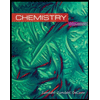 ChemistryChemistryISBN:9781305957404Author:Steven S. Zumdahl, Susan A. Zumdahl, Donald J. DeCostePublisher:Cengage Learning
ChemistryChemistryISBN:9781305957404Author:Steven S. Zumdahl, Susan A. Zumdahl, Donald J. DeCostePublisher:Cengage Learning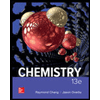 ChemistryChemistryISBN:9781259911156Author:Raymond Chang Dr., Jason Overby ProfessorPublisher:McGraw-Hill Education
ChemistryChemistryISBN:9781259911156Author:Raymond Chang Dr., Jason Overby ProfessorPublisher:McGraw-Hill Education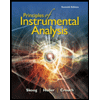 Principles of Instrumental AnalysisChemistryISBN:9781305577213Author:Douglas A. Skoog, F. James Holler, Stanley R. CrouchPublisher:Cengage Learning
Principles of Instrumental AnalysisChemistryISBN:9781305577213Author:Douglas A. Skoog, F. James Holler, Stanley R. CrouchPublisher:Cengage Learning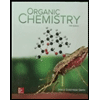 Organic ChemistryChemistryISBN:9780078021558Author:Janice Gorzynski Smith Dr.Publisher:McGraw-Hill Education
Organic ChemistryChemistryISBN:9780078021558Author:Janice Gorzynski Smith Dr.Publisher:McGraw-Hill Education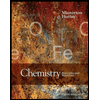 Chemistry: Principles and ReactionsChemistryISBN:9781305079373Author:William L. Masterton, Cecile N. HurleyPublisher:Cengage Learning
Chemistry: Principles and ReactionsChemistryISBN:9781305079373Author:William L. Masterton, Cecile N. HurleyPublisher:Cengage Learning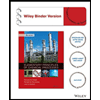 Elementary Principles of Chemical Processes, Bind...ChemistryISBN:9781118431221Author:Richard M. Felder, Ronald W. Rousseau, Lisa G. BullardPublisher:WILEY
Elementary Principles of Chemical Processes, Bind...ChemistryISBN:9781118431221Author:Richard M. Felder, Ronald W. Rousseau, Lisa G. BullardPublisher:WILEY

Chemistry
Chemistry
ISBN:9781305957404
Author:Steven S. Zumdahl, Susan A. Zumdahl, Donald J. DeCoste
Publisher:Cengage Learning

Chemistry
Chemistry
ISBN:9781259911156
Author:Raymond Chang Dr., Jason Overby Professor
Publisher:McGraw-Hill Education

Principles of Instrumental Analysis
Chemistry
ISBN:9781305577213
Author:Douglas A. Skoog, F. James Holler, Stanley R. Crouch
Publisher:Cengage Learning

Organic Chemistry
Chemistry
ISBN:9780078021558
Author:Janice Gorzynski Smith Dr.
Publisher:McGraw-Hill Education

Chemistry: Principles and Reactions
Chemistry
ISBN:9781305079373
Author:William L. Masterton, Cecile N. Hurley
Publisher:Cengage Learning

Elementary Principles of Chemical Processes, Bind...
Chemistry
ISBN:9781118431221
Author:Richard M. Felder, Ronald W. Rousseau, Lisa G. Bullard
Publisher:WILEY
Types of Matter: Elements, Compounds and Mixtures; Author: Professor Dave Explains;https://www.youtube.com/watch?v=dggHWvFJ8Xs;License: Standard YouTube License, CC-BY